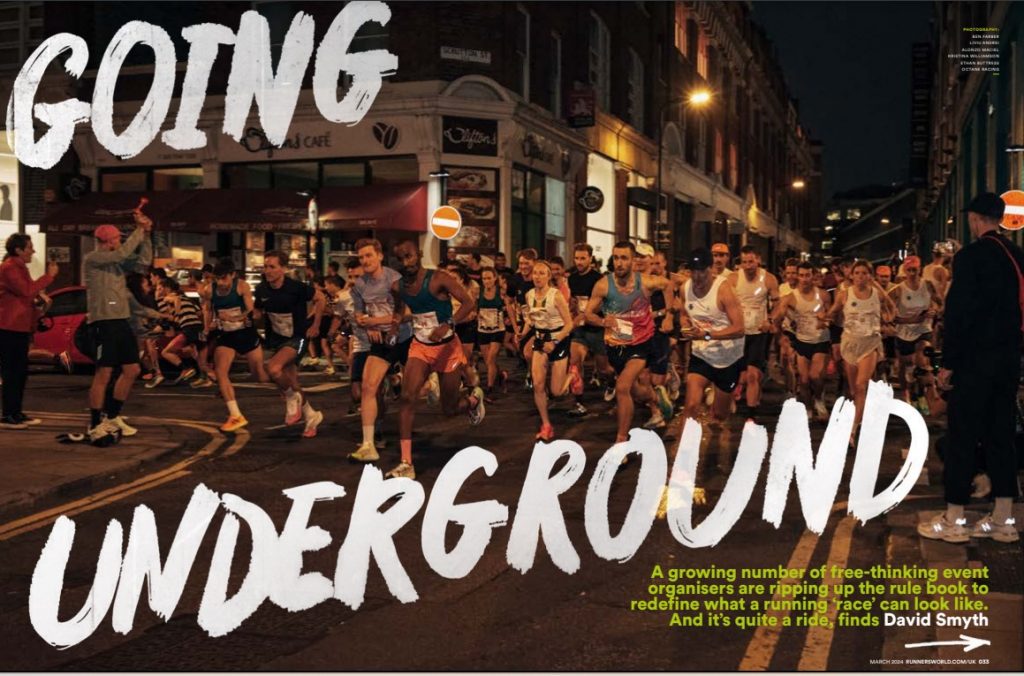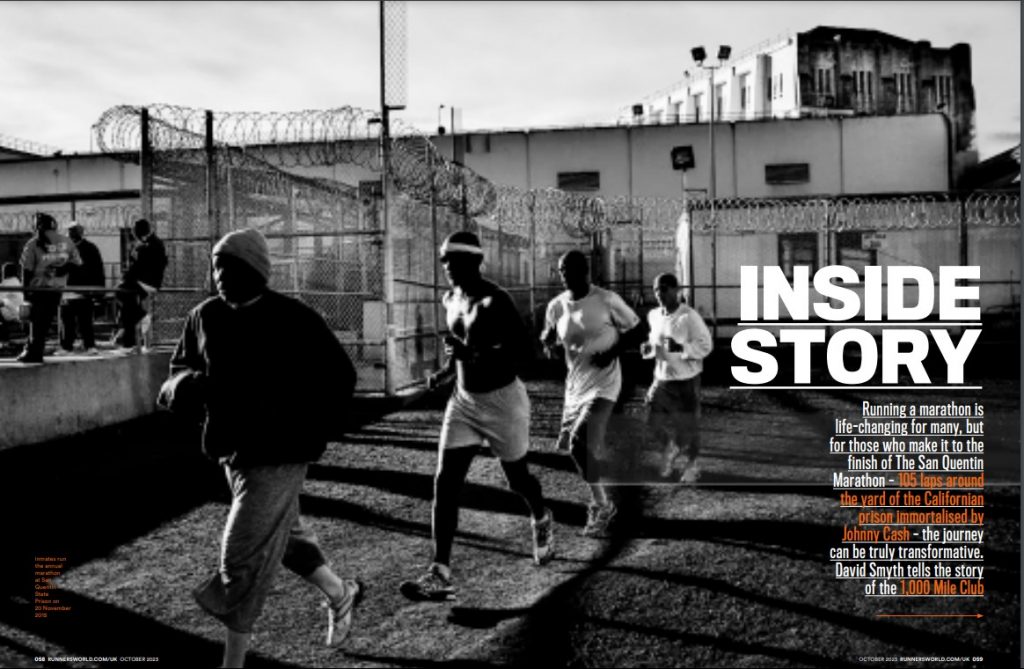Just because it has to be a remote four-way video interview doesn’t mean the Beastie Boys won’t make an effort. When the two surviving band members, Mike Diamond and Adam Horovitz, dial in from their locked down LA homes alongside Spike Jonze, the director of a new documentary about the group, all three are sporting matching purple sweaters.
“I look like a turtle. I look like a Steve Zissou turtle,” says Horovitz, 53, who has topped his off with a matching purple beanie and thick black glasses. He’s sitting outside on a shaky phone in the doorway of his garage, backed by stacked Christmas decorations, so that he can smoke. Diamond, 54, is perched on his bed in Malibu with his dog Coco and some framed surfing photography.
Performing as Ad-Rock, Mike D and MCA – that’s Adam Yauch, who died of salivary gland cancer in 2012 – they released eight albums of outlandish hip hop between 1986 and 2011, trading quotable zingers at a dizzying rate over music that ranged from hardcore rock to heavy block party beats to dextrous live funk. Yauch’s death at 47 stopped the music, so lately they’ve shifted into full nostalgia mode. In 2018 they published a book, titled simply Book, a lavish hardback that avoids the traditional autobiography format in typically zany style by including a comic, a recipe section and a glossy supplement in which fashion journalist André Leon Talley slaughters their dress sense.
The book became a brief tour in the autumn of that year – Beastie Boys Book: Live and Direct – with the pair telling their stories to theatre audiences in New York, LA, San Francisco and London. Then they did a different version of the show in Brooklyn’s Kings Theatre in April 2019, which is what Jonze filmed for the documentary coming to Apple TV+ next week.
“The book was the thing. Still is the thing,” says Horovitz. “Then the show was just coming by to say hi. And now with the movie there’s another thing. They’re all together, united.”
Jonze, 50, was the obvious choice to film it. He’s probably known just as much for his 1994 video for the Beastie Boys song Sabotage – a gonzo cop show parody in which the band sprint around the streets of LA in bad wigs – as he is for his surreal movie debut Being John Malkovich. He first met the trio to photograph them for his youth culture magazine Dirt in 1991 and has been in their orbit ever since. Check out his lesser known 2011 video for Don’t Play No Game That I Can’t Win, 11 minutes of hilariously shonky puppetry featuring zombies, sharks, a violent yeti and the Boys as heroic Action Men.
“I was really into them when I was in high school and they put out their first record,” says Jonze. “I felt like I related to them. They reminded me of myself and my friends, that camaraderie that they had.”
“It felt really good to do this with Adam and Spike, two of my oldest friends. We’ve been through almost this whole story together,” adds Diamond. That helped with the strangeness of being on stage with a microphone but not rapping. “This might sound surprising but with music, we’re not actually using our brains. It’s not conscious thought, because it’s so familiar. With this, it was foreign to us. You’re constantly thinking, ‘What am I going to say next? Where am I supposed to be?’”
“In between songs in our shows, we would spend a lot of time just talking to each other, making each other laugh. This felt a lot like those in-between moments, which was really nice,” says Horovitz.
They have an epic journey to cover in two hours, from their early notoriety as beer-spraying teenage punks turned world’s first white rappers, to Yauch’s growth as an activist and Buddhist organising the huge Tibetan Freedom Concerts of the late Nineties. Their instantly familiar voices – MCA’s gruff barking, Ad-Rock’s overexcited screech, Mike D somewhere in between – were the only constants as their musical and visual styles digressed. Those and a love for false moustaches.
What period do they enjoy looking back on the most? “The Licensed to Ill time is definitely good for comedy. It’s easy to land jokes,” says Horovitz. That debut album, including the obnoxious single Fight For Your Right (To Party), sold 10 million copies in the US and enabled them to tour the world with a woman dancing in a cage and a 25ft hydraulic penis. Volkswagen took out an ad offering to post free VW badges to fans so that they would stop snapping them off cars to copy Diamond’s necklace. To the Daily Mirror they were the new Sex Pistols. “POP IDOLS SNEER AT DYING KIDS,” yelled the front page on May 14 1987.
They were “making fun of party bros and frat guys,” they say. Trouble was, the party bros really liked them. “This thing became bigger than we ever thought it would be, and it was a case of becoming what you hate,” explains Diamond. “What’s satisfying now is getting the chance to comment on all that and hopefully make fun of ourselves a little.”
At one point in the show, Horovitz recites the lyrics to a track from that first album, Girls: “Girls to do the dishes/Girls to clean up my room/Girls to do the laundry…” and doesn’t look proud of himself. “It’s one thing to listen to it and one thing to read, but when you actually say it out loud, it’s clear and definitive, and it’s tough to look back on,” he says. “But we wanted to document our band, so it would be weird if we weren’t truthful in it, right?”
Thankfully they have a later lyric which is much more deserving of memorialising, from Sure Shot, in 1994: “I want to say a little something that’s long overdue/The disrespect to women has got to be through/To all the mothers and the sisters and the wives and friends/I want to offer my love and respect to the end.” By this time they had flopped with the hyperactive sampling of Licensed to Ill’s follow-up, Paul’s Boutique, taken the time finally to learn their instruments properly for the live sound of Check Your Head in 1992 and become a huge band again with the subsequent albums Ill Communication and Hello Nasty.
That line about women was Yauch, who comes across in the documentary and book as the band’s real driving force. Since his loss, Horovitz has gone on to act alongside Ben Stiller in Noah Baumbach’s film While We’re Young. Diamond has been a producer for bands including Slaves and Portugal. The Man. (Jonze, meanwhile, also seems to have slowed down since winning an Oscar for his screenplay for his film Her in 2013. Asked about future movie plans, he says: “It’s hard right now to think about anything past today.”)
“Yauch was very unique in the band,” says Diamond. “He had this fearless thing, this connection to ideas where there was no pause button. Adam and I might hesitate for a moment and he would just go full speed into it. That energy was infectious.”
The film feels like a grand tribute. On stage, Horovitz becomes tearful talking about the last ever Beastie Boys gig, headlining the Bonnaroo festival in Tennessee in 2009. It seemed unfair because they didn’t know at the time that it would be the final show. Now, getting the chance to live it all again on stage and on film, hydraulic penis and all, feels like the happy ending they deserve.
Beastie Boys Story premieres globally on Apple TV+ on April 24











